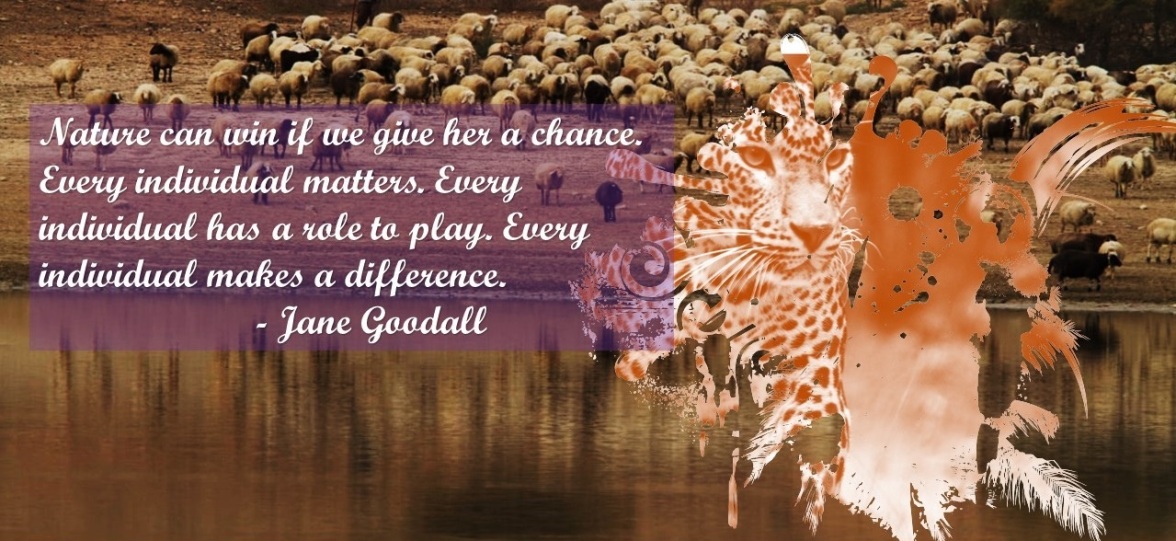What is an ecological restoration program?
Ecological restoration, or in general ecosystem restoration, is considered as a process that assists an ecosystem to recover from degradation, damages, and destructions. This can be with respect to the structure (species composition, water, and soil properties, etc.), functional properties (e.g. productivity and energy flow), and exchanges with surrounding landscapes.
The process might be to (1) reduce the pressure, (2) involve substantial interventions (e.g. planting vegetation), (3) re-establishment of locally extinct species, and (4) remove invasive alien species. Restoration may also address the connectivity of the landscapes, habitats, ecological processes that facilitate ecosystem function as well as evolutionary processes. Thus, within a broader landscape, connectivity restoration may be addressed in the following cases:
- Buffer zones
- Linkages between protected areas
- Landscape mosaic in order to link habitats for a more functional ecosystem
A successful ecological restoration program should principally meet effectiveness (re-established and maintained the values), efficiency (maximizes beneficial outcomes and minimizes costs and efforts), and engagement of partners and stakeholders. Meanwhile, habitat restoration programs vary in scale (e.g. small urban areas to restore native plant species or landscape-scale to address the impacts of habitat fragmentation). In such programs, goals may be set in view of a combination of considerations (e.g. ecological, historical, philosophical perspectives). Yet, there might be also ecological, economic, and social constraints.
Our earlier activities led us to establish the Persian Leopard Habitat Restoration Program in Iran
There is a significant aspect in all the projects by the Asian Leopard Specialist Society which is the fact that all of ALSS projects are in the same line to provide address “the Persian leopard conservation needs”. Therefore, all the research projects and the fundamental programs that we develop are to build the capacity to enable us to conduct research-based prioritized conservation and management programs.
In this regard, Dr. Laurie Marker in the foreword of the book entitled Research and Management Practices for Conservation of the Persian Leopard in Iran (Editor: Arezoo Sanei, 2021), wrote:
“Step-by-step, they build and improve upon present knowledge pertaining to various aspects of a topic with medium- or long-term objectives. Innovative methodologies and new findings not only increase the body of scientific knowledge about subspecies and the accompanying practices but also serve to share findings for improved transboundary cooperation and conservation management practices addressing the Persian leopard population in Southwest Asia.”
Considering this, it is worth mentioning that the habitat restoration program presented here has a background of almost a decade starting with: research practices, capacity building in the areas, development of the Persian leopard habitat monitoring scheme (for the first time in Iran, an awarded project), and now embarking on a vital conservation program with the Persian leopard as a flagship. This effort is the first-ever systematic purposeful attempt of its kind being implemented to specifically address the Persian leopard habitat restoration in Iran.
This is important to consider that habitat restoration is not simply planting the lost vegetation in the area. In addition, many risks could be associated with a lack of appropriate research and investigations before conducting any restoration programs. Remembering the importance of developing appropriate strategies for prioritized conservation efforts, particularly when selecting the project sites, some of our earlier activities that led us to the present program are as follows:
(a) Persian leopard habitat suitability studies
Click here to read the research findings
(b) Five innovative regional formulas concerning the Persian leopard regional persistence in relation to the land use and land cover variations
Click here to read the publication
(c) Establishment of the Persian Leopard Monitoring Reference Areas
Click here to learn about the project
(d) Establishment of the local groups to involve in habitat monitoring and restoration programs (awarded project)
Click here to learn about the project
ALSS plan and activities concerning the Persian Leopard Habitat Restoration
To begin the 2nd phase of the program (this phase started in Sept. 2022)
Initially, it should be mentioned that ALSS Habitat Restoration Program (which is the first project of its kind in Iran) is a continuous and long-term program. Therefore, various aspects of habitat restoration will be addressed in each phase. Meanwhile, one of the first pilot sites we selected during the past years with respect to habitat-related plans is located in northeastern Iran. In this particular site, we already conducted:
- Field studies are conducted that also led us to the ground validation of our MaxEnt potential habitat distribution models developed for this area (Download Manuscript)
- Several awareness-raising courses followed by capacity-building and empowerment programs are conducted.
- We trained local coordinators with respect to (1) the field monitoring techniques concerning the habitat quality and status on one hand and (2) the involvement of local communities on the other hand (see the project)
- We conducted baseline surveys and our innovative monitoring scheme is first established in this area (see the project)
- Recently a local group namely Hazaz is established in this area which is in relation to the ALSS habitat monitoring scheme. As such, the financial mechanism to support habitat-related activities to ensure the sustainability of the outcomes is already available.
Subsequently, in March 2022 we developed a new program in the same province to improve the habitat quality (and so the suitability status) by the active involvement of local communities both in terms of habitat restoration activities and follow-up preservation and monitoring. This is a research-based conservation practice and updates are available on the related page (click here).



